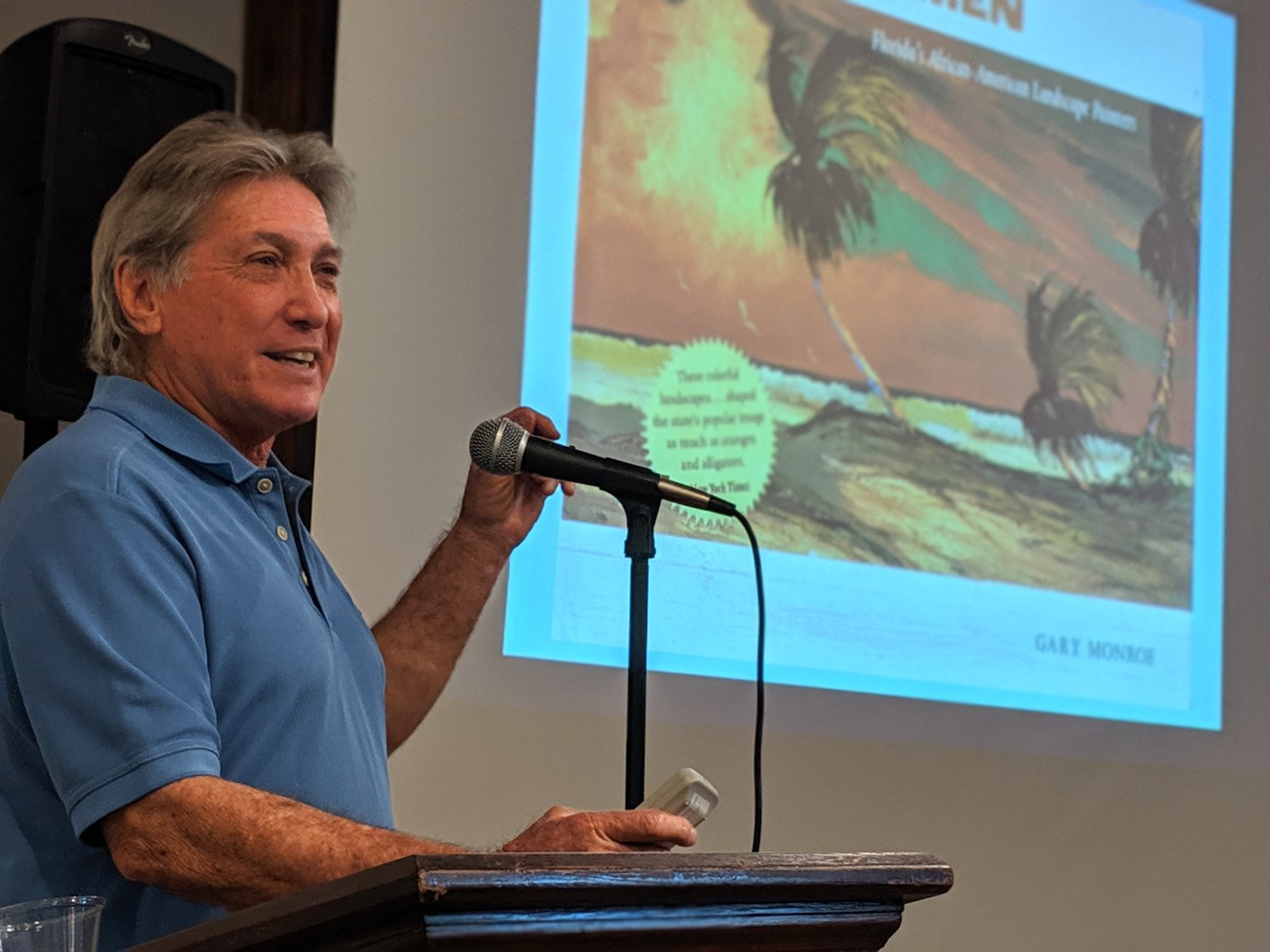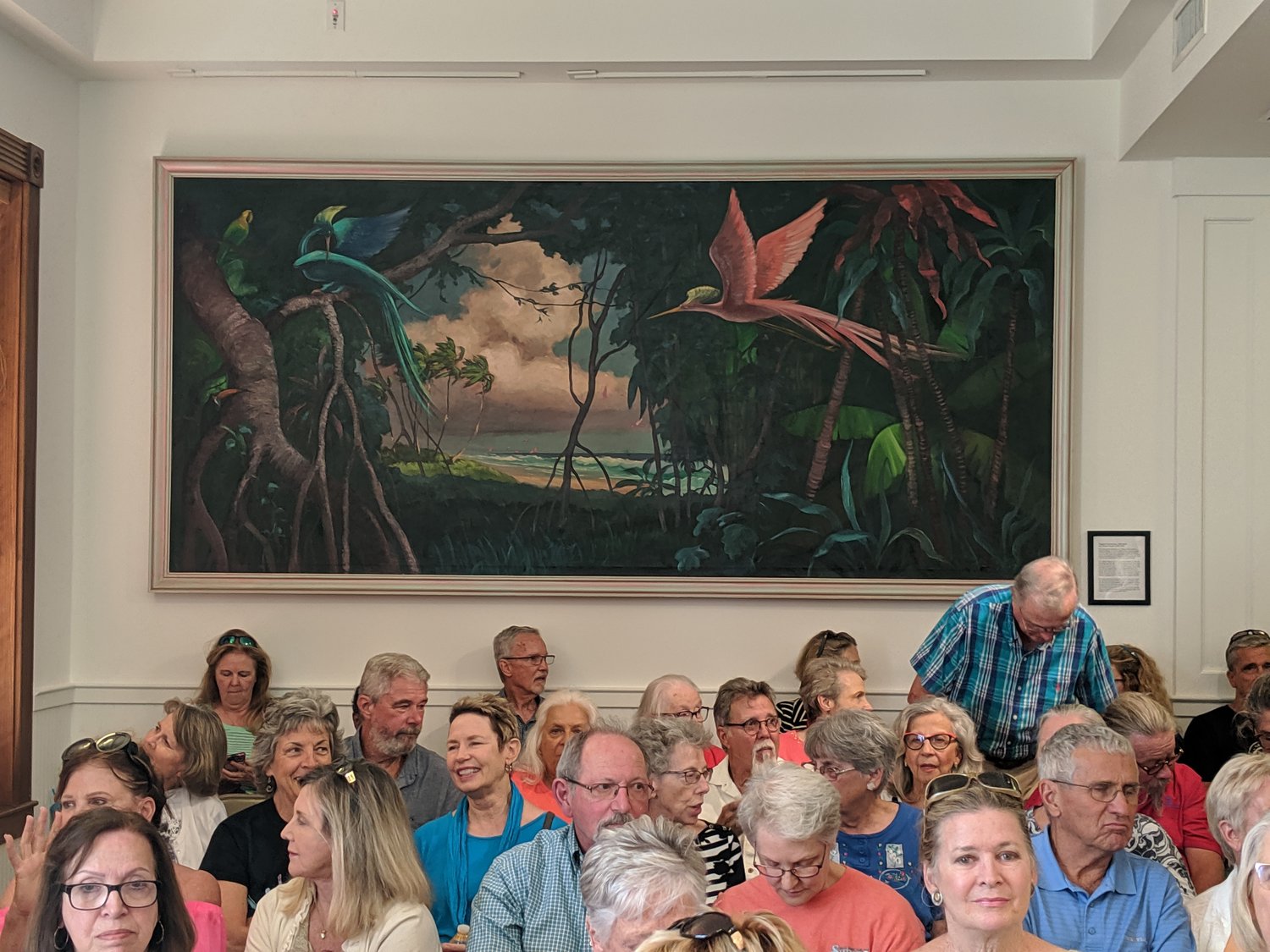Beaches Museum features Florida’s Highwaymen lecture
Author Gary Monroe presented a talk about African American landscape painters
The Beaches Museum hosted author Gary Monroe on July 11 to speak about his work writing about and interviewing the African American Florida landscape painters known as the “Highwaymen.” The paintings, which were sold door-to-door from the 50s through the 80s, have recently become recognized as indigenous Florida art and celebrated throughout the country.
Monroe’s book, “The Highwaymen: Florida’s African-American Landscape Painters,” first recognized the art form, launching the overlooked painting technique cultivated by the Highwaymen into the mainstream art world.
The technique was a blend of a fast painting styles representing Florida’s natural landscapes. It was created when trying to paint as quickly as possible in order to have more product that, in turn, could be sold cheaply up and down the coast of Florida.
“What they didn’t bargain for, and they couldn’t, is that inadvertently in their quest to make more money and rush paintings out, bastardized the cherished concert of romantic landscape painting, and I argue, to arrive and fresher more relevant form for the time they were painting (in),” Monroe said.
The paintings, which are now being purchased by art collectors across the county for thousands, originally sold for about $25 dollars apiece. They often feature vivid orange sunsets, turbulent beaches, Royal Poinsettia trees and palms bending under the force of the wind. The Highwaymen (and one woman) painted with oils, “intuitively and impulsively,” without first using a grid or penciled under drawings. The paintings were often painted on “Upson” board, which is traditionally used for roof sheeting and framed with crown molding. The art would sit stacked in the trunks of their cars, often still wet, to be sold up and down A1A and U.S. 1 during the height of the Civil Rights era. The artists, who were self-taught from Fort Pierce, faced many obstacles making art rather than picking oranges or tomatoes in the fields.
“It was a rough place, segregation was alive and well,” Monroe said. “It was not a land of opportunity. For Fort Pierce particularly.”
Monroe, who is a native visual arts professor from Miami, retells the story of the Highwaymen through personal anecdotes and in-person interviews. After the publication of his book, the artists have been nominated into the Florida Artists Hall of Fame and have become a measure of Florida indigenous art.
“It’s not a testimony to my writing whatsoever, there is something about the paintings that is genuine,” Monroe said. “And it struck a chord. It’s a stripped-bare aesthetic, there is no artifice. There is no decoration.”
Prior to the national critical acclaim of the work, many viewed the paintings negatively, seeing them as mediocre or factory-produced, “motel art.” Monroe sees the paintings’ production method and style as intrinsic to Florida’s heritage, however.
“I understand why people call it motel art,” Monroe said. “It's derogatory but it's perfect. What characterizes Florida better than the motels where these paintings are being made?”










